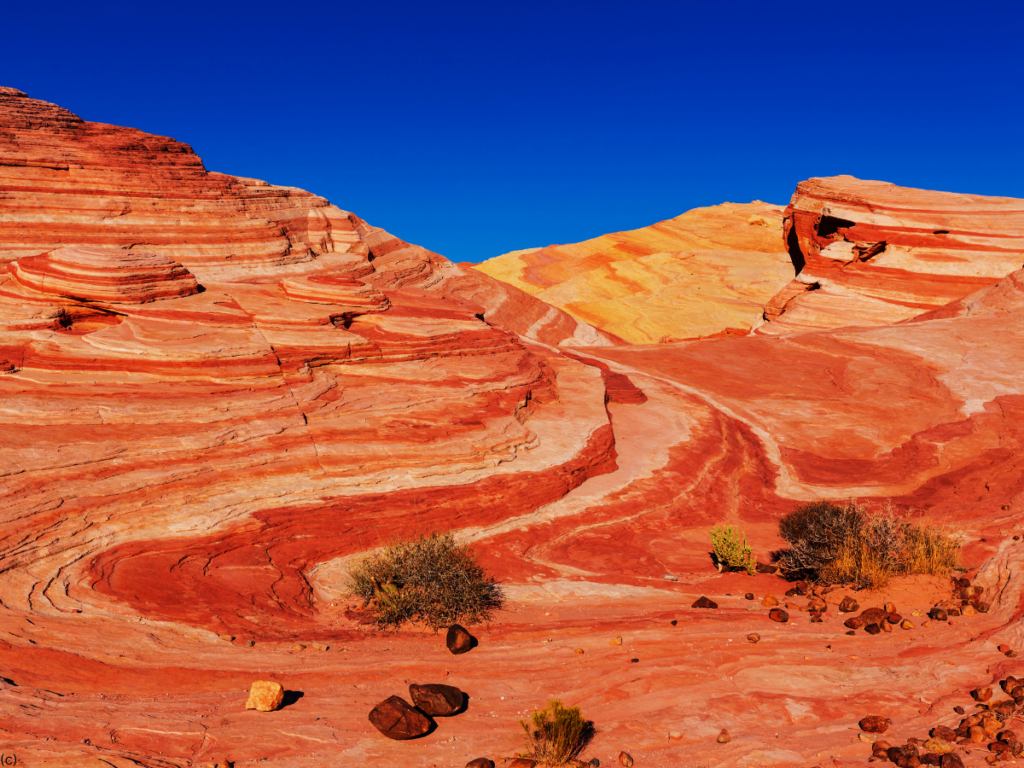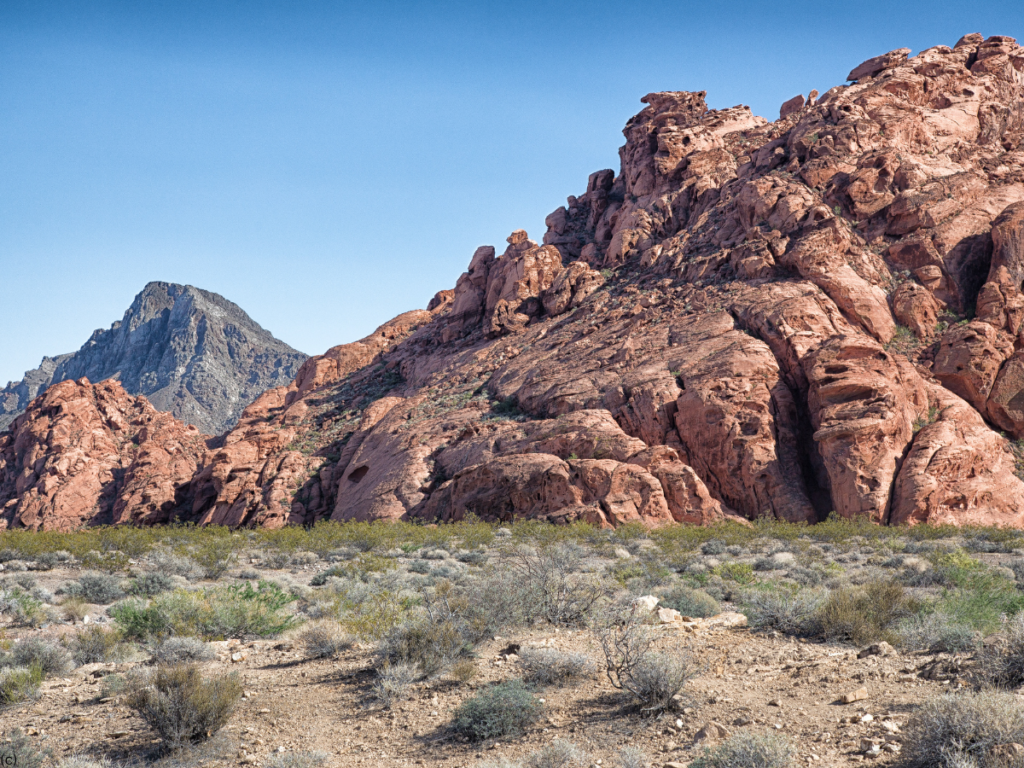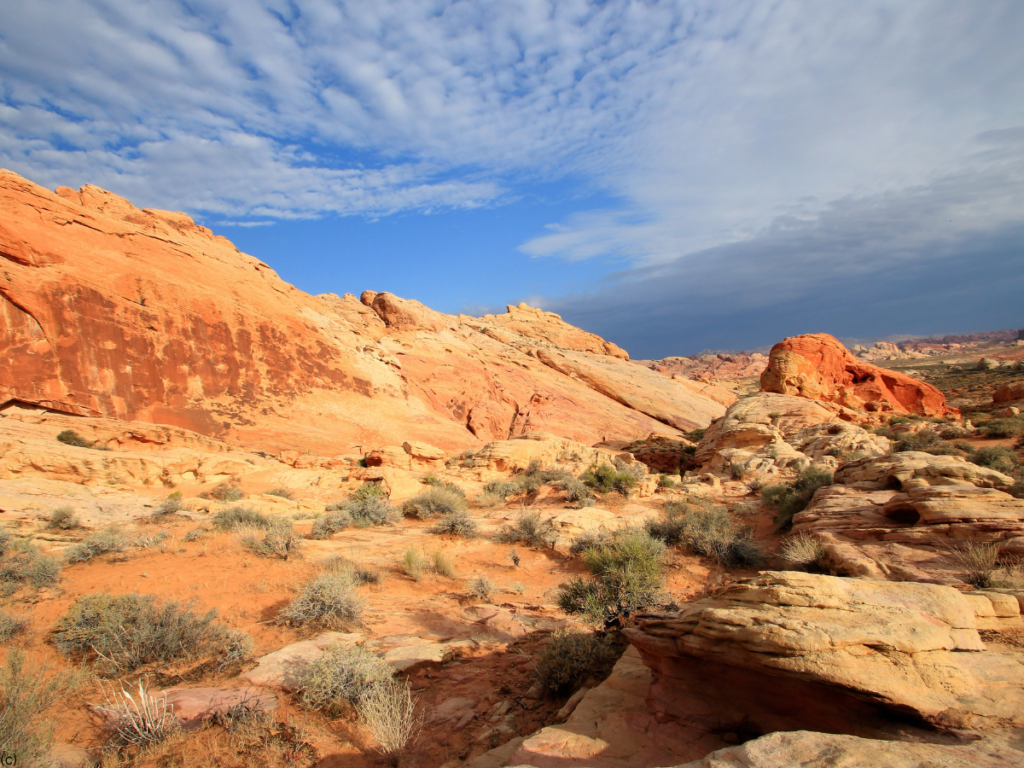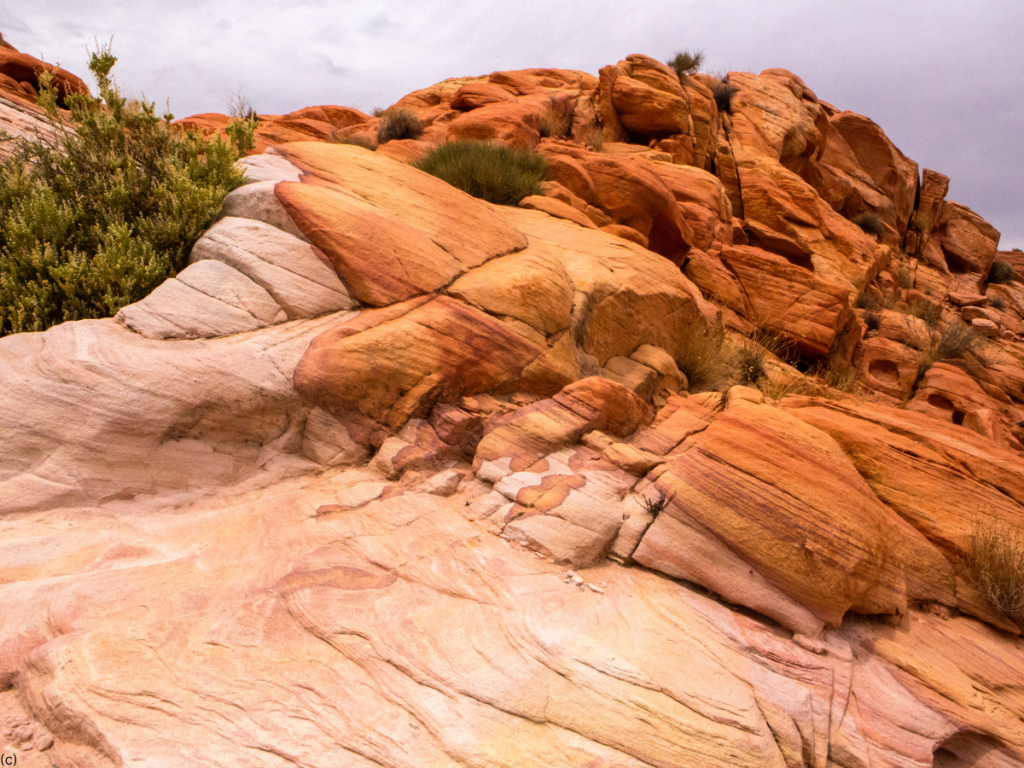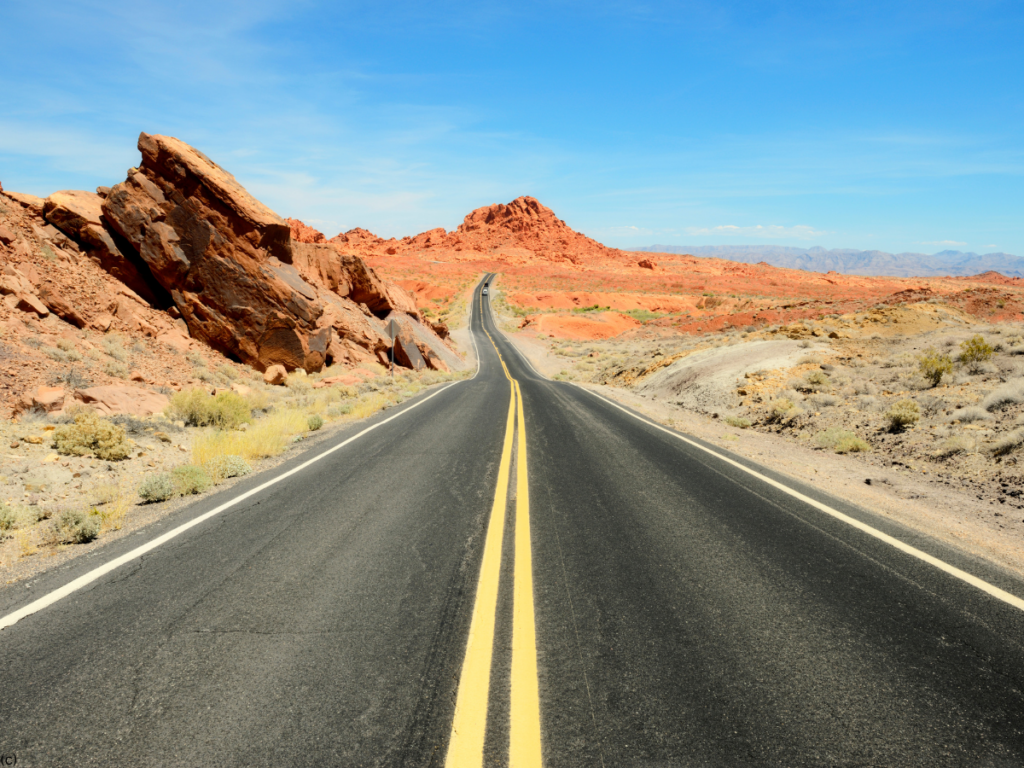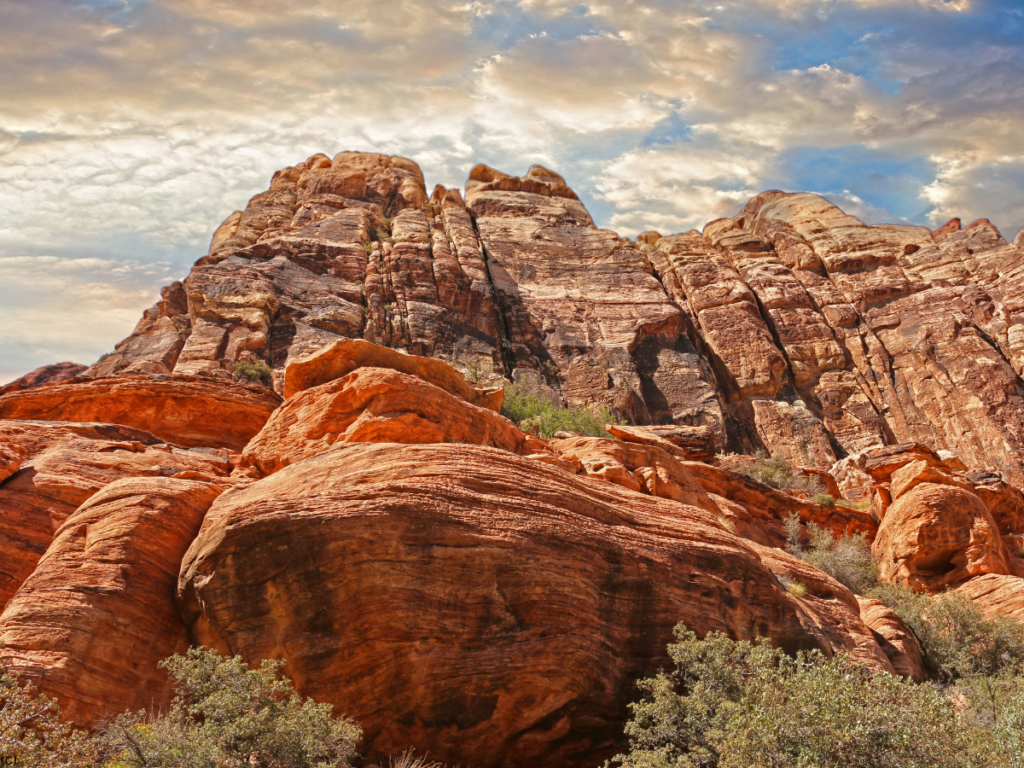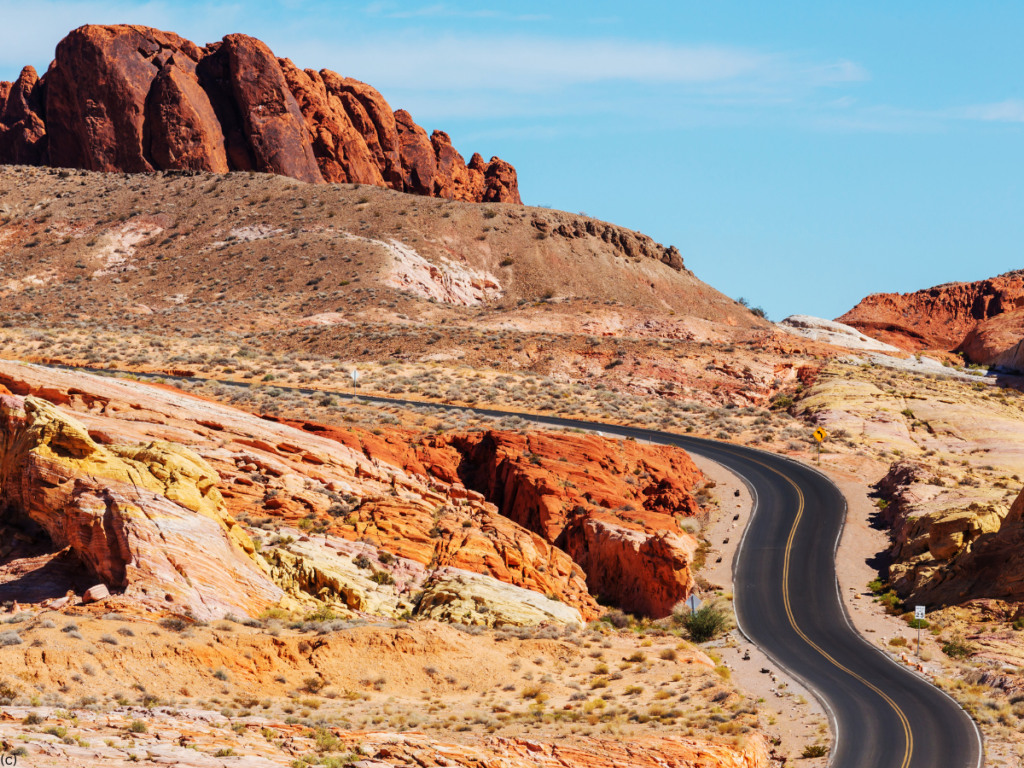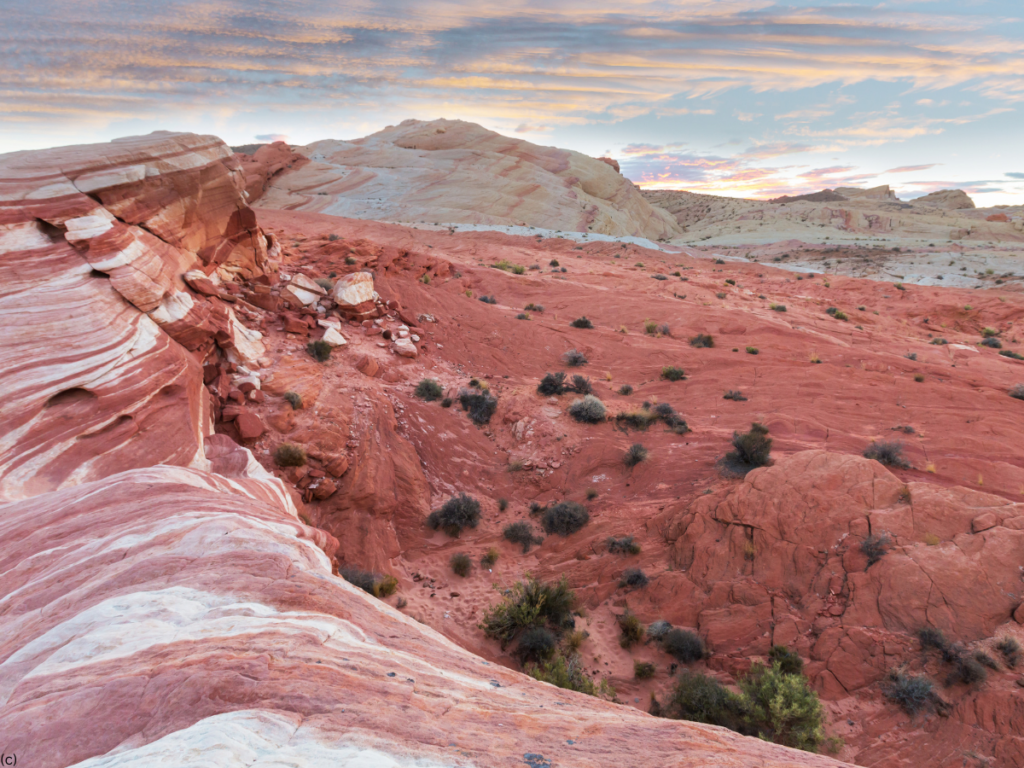
Nestled in the southern part of Nevada, just an hour’s drive from Las Vegas, Valley of Fire State Park stands as one of the state’s most visually captivating natural treasures. Renowned for its vibrant red rock formations, ancient petroglyphs, and dramatic desert landscapes, the park offers a wealth of natural beauty and outdoor activities. This comprehensive guide will take you through the best things to see and do in Valley of Fire, ensuring you make the most of your visit to this awe-inspiring destination.
1. Iconic Rock Formations
Fire Wave: One of the park’s most photographed spots, the Fire Wave features undulating red and white striped rock formations resembling a wave frozen in time. The hike to this stunning formation is relatively short, about 1.5 miles round-trip, and offers mesmerizing views of the colorful rocks. The best times to visit are early in the morning or late in the afternoon when the light enhances the vibrant colors of the rock formations.
Elephant Rock: Named for its resemblance to an elephant, this massive rock formation is a must-see. The short and easy hike to Elephant Rock provides a great opportunity for family-friendly exploration. The formation is especially striking at sunset when the golden light casts dramatic shadows.
Arch Rock: This natural arch stands as one of the park’s iconic landmarks. The short trail to Arch Rock is relatively easy and suitable for all skill levels. The arch is a popular spot for photography, particularly during the golden hours of sunrise and sunset when the light creates stunning contrasts against the arch.
2. Petroglyphs and Cultural Sites
Atlatl Rock: Atlatl Rock features an impressive array of ancient petroglyphs created by the Ancestral Puebloans (Anasazi) over 2,000 years ago. A short, paved trail leads to a viewing platform where you can observe these fascinating rock carvings up close. The petroglyphs include depictions of human figures, animals, and abstract symbols.
Mouse’s Tank: Named after a notorious outlaw who hid in the area, Mouse’s Tank is home to a significant concentration of petroglyphs. The trail to Mouse’s Tank is a 0.75-mile loop that takes you past numerous rock carvings and leads to a natural rock basin, or “tank,” which was used by early settlers and wildlife to collect rainwater.
Petrified Logs: Valley of Fire is home to one of the largest concentrations of petrified wood in the world. The Petrified Logs Trail, a short and easy 0.4-mile loop, showcases colorful and well-preserved fossilized logs that offer a glimpse into the park’s ancient past.
3. Scenic Drives and Overlooks
Valley of Fire Scenic Byway: The 15-mile Valley of Fire Scenic Byway is a must-do for any visitor. The route winds through the park, offering access to many of the park’s highlights, including Fire Wave, Elephant Rock, and Arch Rock. The byway provides ample opportunities for scenic stops and photo opportunities.
White Domes Scenic Loop: This 1.1-mile loop trail features a variety of geological formations, including colorful rock domes and narrow canyons. The trail passes through a landscape of white and red rock, creating a dramatic contrast that is perfect for photography.
Rainbow Vista: Rainbow Vista is a popular viewpoint offering panoramic views of the park’s colorful rock formations. The short walk from the parking area leads to an overlook that provides a sweeping view of the valley and its vibrant hues.
4. Hiking Trails
Seven Wonders Loop: This 2.4-mile loop trail takes hikers through some of the park’s most impressive rock formations, including the Fire Wave and the White Domes. The trail is moderately challenging and offers a comprehensive tour of the park’s geological wonders.
Pink Canyon: A short but rewarding hike, Pink Canyon features striking pink-hued rock formations. The trail is about 1.5 miles round-trip and offers a unique perspective on the park’s diverse rock colors and textures.
Mouse’s Tank Trail: In addition to its petroglyphs, the Mouse’s Tank Trail offers a scenic walk through a narrow, winding canyon. The 0.75-mile loop is relatively easy and provides opportunities to see both rock carvings and desert flora.
5. Desert Flora and Fauna
Wildlife Viewing: Valley of Fire is home to a variety of desert wildlife, including bighorn sheep, coyotes, and a range of bird species. Early morning and late afternoon are the best times for wildlife viewing, as animals are more active during these cooler parts of the day.
Desert Flora: The park’s diverse plant life includes species adapted to the harsh desert environment, such as the Joshua tree, barrel cactus, and desert marigold. Spring is an excellent time to visit if you’re interested in seeing the park’s wildflowers in bloom.
Botanical Wonders: For those interested in plant life, the park’s diverse vegetation offers insight into desert ecosystems. Look for distinctive species like the Mojave yucca and creosote bush, which thrive in the park’s arid conditions.
6. Photography Tips
Golden Hours: The best times for photography in Valley of Fire are during the golden hours of sunrise and sunset. The low-angle light enhances the colors of the rock formations and casts dramatic shadows, creating ideal conditions for capturing stunning photographs.
Night Sky Photography: The park’s remote location and minimal light pollution make it a fantastic spot for night sky photography. On clear nights, you can capture the Milky Way and other celestial phenomena against the backdrop of the park’s unique rock formations.
Composition Tips: When photographing rock formations, consider using a wide-angle lens to capture the expansive landscapes and dramatic rock features. Additionally, incorporating foreground elements, such as desert flora or unique rock patterns, can add depth and interest to your images.
7. Visitor Information and Tips
Park Hours and Entrance Fees: Valley of Fire State Park is open year-round, with park hours typically from sunrise to sunset. There is an entrance fee of $10 per vehicle, and annual passes are available for frequent visitors.
Safety Tips: The desert environment can be extreme, so it’s essential to stay hydrated, wear sun protection, and bring plenty of water. Temperatures can soar in the summer, so plan your hikes and outdoor activities for the cooler parts of the day.
What to Bring: In addition to water, bring sunscreen, a hat, sturdy hiking shoes, and a camera. A map of the park and a basic first aid kit are also recommended for safety.
Camping: For those looking to extend their visit, the park offers two campgrounds: Atlatl Rock and Arch Rock. Both campgrounds provide basic amenities and are first-come, first-served. Reservations are not accepted, so arrive early to secure a spot.
Valley of Fire State Park is a geological wonderland that offers a rich tapestry of natural beauty, ancient history, and outdoor adventure. From the striking rock formations of the Fire Wave and Elephant Rock to the ancient petroglyphs of Atlatl Rock and Mouse’s Tank, the park is a treasure trove of sights and experiences. Whether you’re a seasoned hiker, a photography enthusiast, or simply someone looking to explore one of Nevada’s most spectacular landscapes, Valley of Fire promises an unforgettable experience. Plan your visit, embrace the park’s unique charm, and let the vibrant hues and fascinating formations leave a lasting impression.
